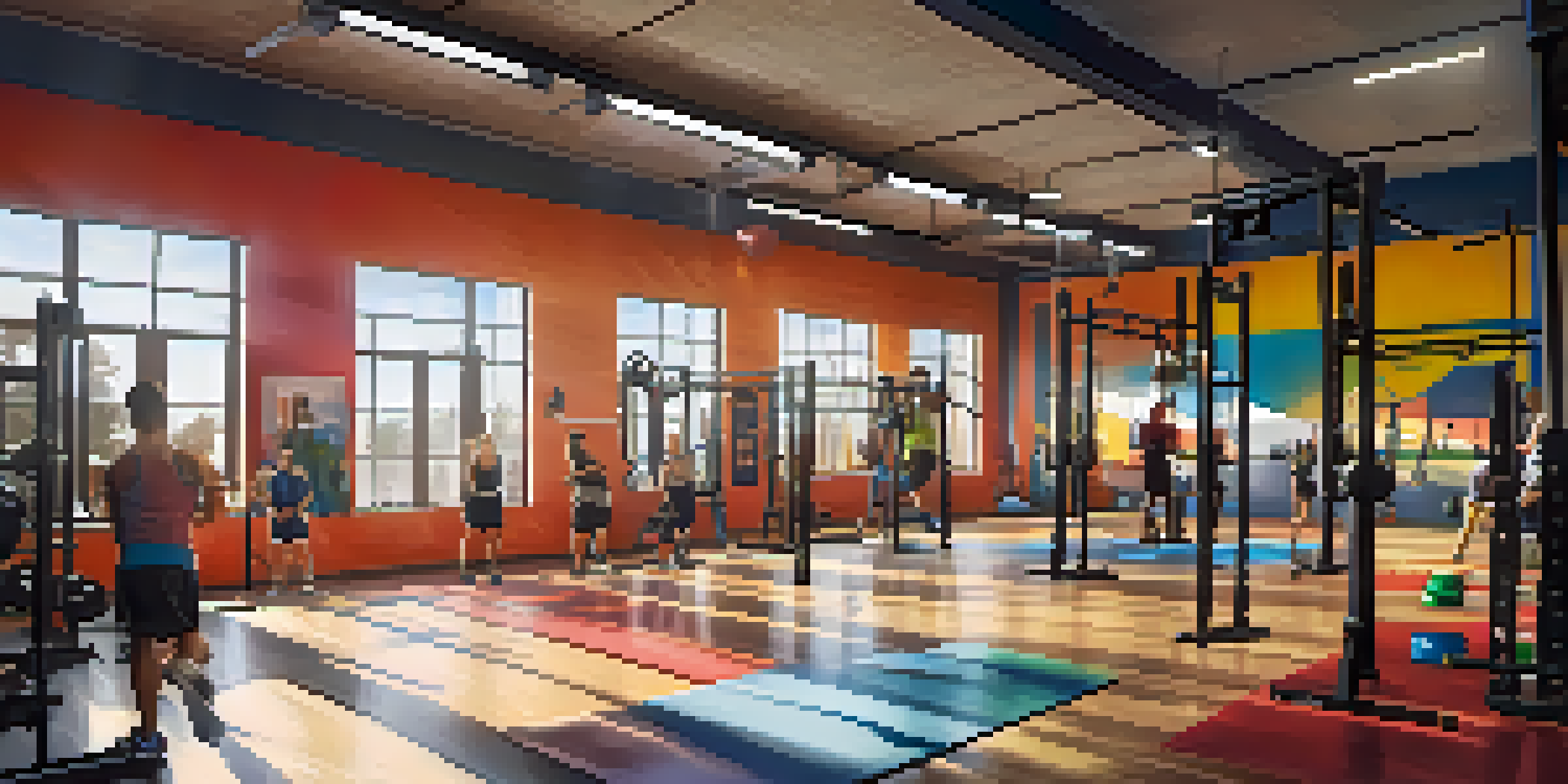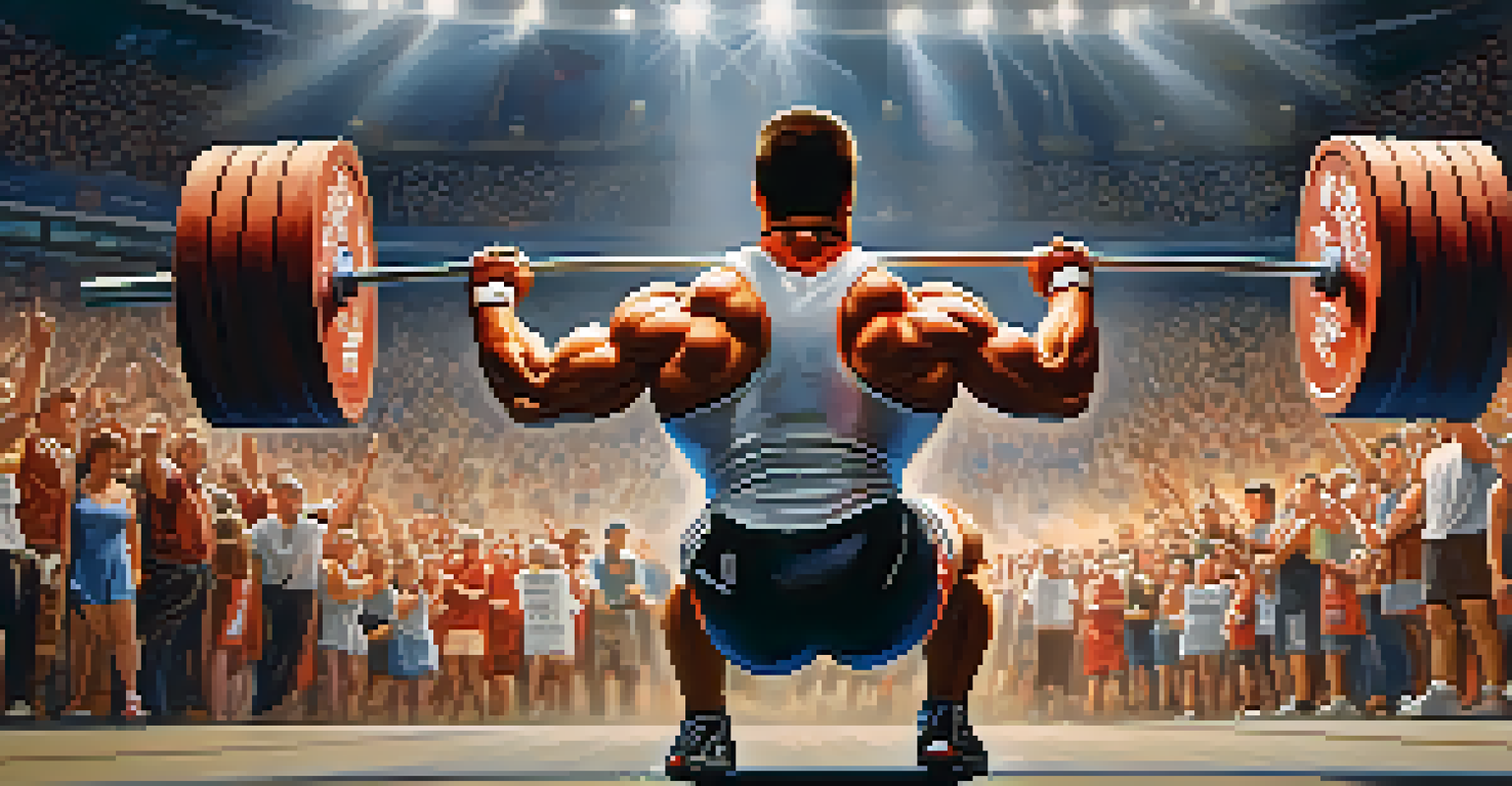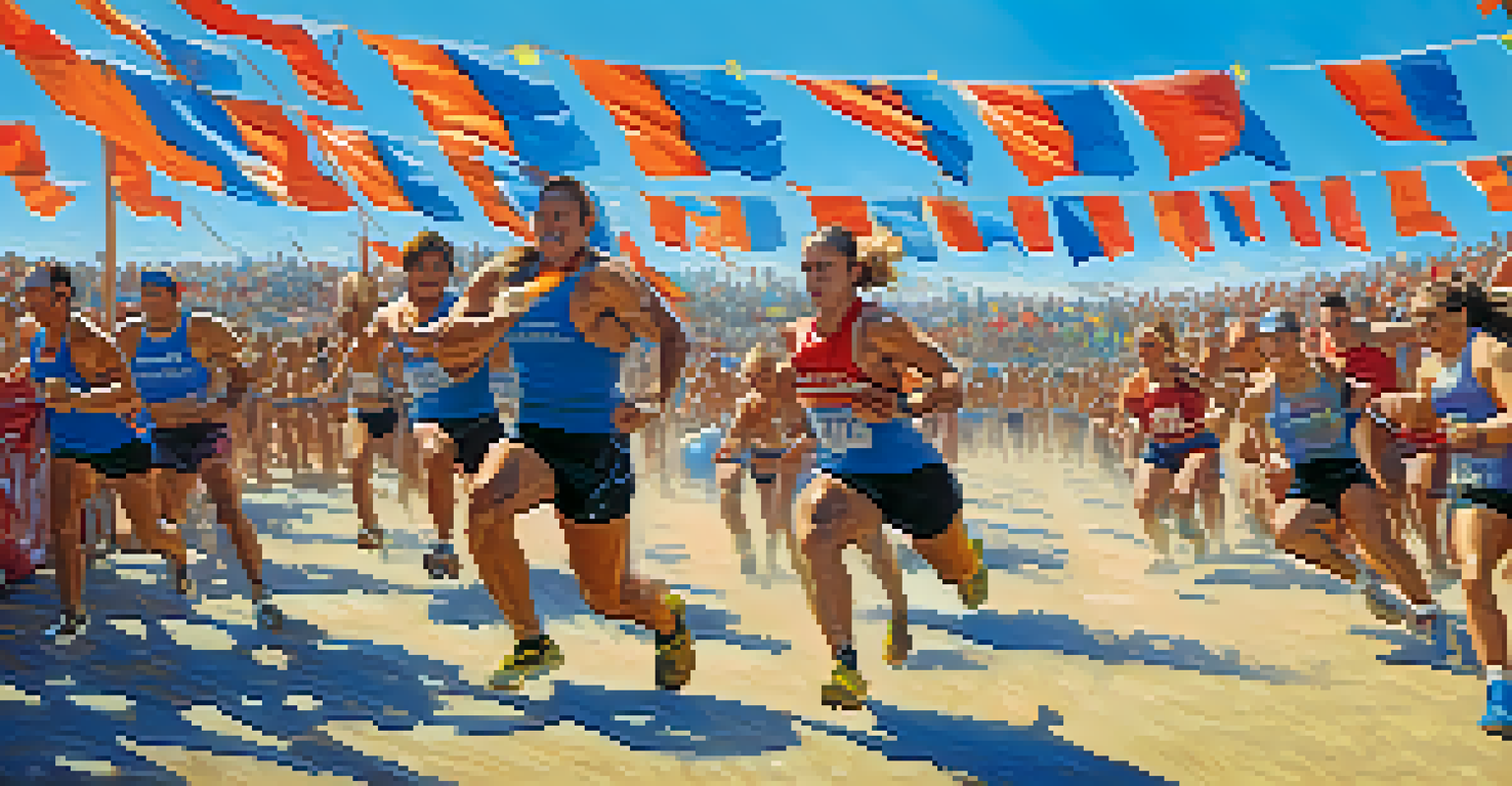CrossFit's Influence on Powerlifting: A Comprehensive Look

The Rise of CrossFit: A New Fitness Phenomenon
CrossFit emerged in the early 2000s, quickly captivating fitness enthusiasts with its high-intensity workouts. The blend of strength training, cardio, and functional movements created a unique approach that promised not only fitness but also community. This rapid popularity changed the landscape of traditional strength sports, including powerlifting, as athletes sought to incorporate CrossFit elements into their routines.
Fitness is not about being better than someone else. It's about being better than you used to be.
As CrossFit gyms, or 'boxes,' proliferated, they began attracting a diverse range of athletes, from seasoned lifters to those new to fitness. The emphasis on varied workouts and scaling options made it accessible to many, while still pushing experienced athletes to their limits. This environment encouraged powerlifters to explore new training methods, ultimately influencing their approach to strength gains.
Moreover, CrossFit's competitive nature, highlighted by events like the CrossFit Games, inspired powerlifters to adopt a more dynamic attitude towards competition. Rather than focusing solely on maximal lifts, many began to appreciate the value of endurance and overall fitness, leading to a fusion of training styles that benefits both disciplines.
CrossFit Techniques That Enhance Powerlifting Skills
One of the most significant impacts of CrossFit on powerlifting lies in its emphasis on technique and form. CrossFit coaches often stress the importance of proper movement patterns to prevent injury, which resonates with powerlifters aiming for longevity in the sport. Techniques like the Olympic lifts, which are frequently incorporated into CrossFit, can improve an athlete's explosive power and overall strength.

Additionally, CrossFit's use of varied rep ranges and metabolic conditioning can help powerlifters develop endurance, which is crucial during longer competitions. By incorporating elements such as circuit training and conditioning workouts, powerlifters can enhance their performance in both strength and stamina. This cross-training approach can make a substantial difference in a powerlifter’s ability to recover between heavy sets.
CrossFit Transforms Powerlifting
The rise of CrossFit has introduced new training techniques and a competitive spirit, influencing powerlifters to diversify their approach to fitness.
Lastly, the focus on functional fitness in CrossFit encourages powerlifters to engage in movements that replicate real-world activities. This not only improves overall athleticism but also enhances the specific muscle groups used in powerlifting, leading to improved performance. By integrating these functional movements, lifters can develop a more well-rounded strength profile.
The Role of Community in CrossFit and Powerlifting
One of the standout features of CrossFit is its strong sense of community, which has also begun to permeate the powerlifting scene. The camaraderie fostered in CrossFit boxes encourages athletes to support one another, whether they're lifting heavier or simply trying to improve their fitness levels. This supportive environment can be incredibly motivating for powerlifters, who often train in solitary settings.
Strength does not come from physical capacity. It comes from an indomitable will.
Furthermore, CrossFit competitions create opportunities for powerlifters to engage with a broader fitness community. Events that combine elements of both disciplines allow athletes to showcase their strength while enjoying a festive, supportive atmosphere. This blending of communities can lead to new friendships and collaborations, enriching the lifting experience for everyone involved.
Lastly, as powerlifting and CrossFit continue to intersect, we see a rise in hybrid competitions that celebrate both strength and endurance. These events not only attract a diverse range of participants but also promote a culture of inclusivity within the fitness world. The shared experiences in these competitions can help break down barriers and encourage a spirit of collaboration among athletes.
Injury Prevention Strategies from CrossFit for Powerlifters
Injury prevention is a key focus in both CrossFit and powerlifting, and the cross-pollination of ideas between the two has led to more comprehensive strategies. CrossFit’s approach to mobility and warm-up routines emphasizes the importance of flexibility and joint health, which can greatly benefit powerlifters. By adopting these practices, lifters can reduce their risk of injury during heavy lifts.
Moreover, the inclusion of accessory work and varied movement patterns in CrossFit encourages powerlifters to target often neglected muscle groups. This balanced approach not only helps in preventing injuries but also boosts overall performance. Athletes who focus solely on the big three lifts—squat, bench press, and deadlift—may overlook the importance of strengthening stabilizing muscles.
Community Boosts Athlete Morale
CrossFit's strong community fosters camaraderie and support, enhancing motivation for powerlifters who often train alone.
CrossFit's emphasis on recovery practices, such as foam rolling and active recovery sessions, can also enhance a powerlifter's training regimen. By incorporating these recovery techniques, athletes can maintain their strength while allowing their bodies to heal. This holistic view of fitness ensures that powerlifters can continue to progress without the risk of burnout or injury.
Nutrition Insights from CrossFit for Powerlifting Success
Nutrition plays a pivotal role in both CrossFit and powerlifting, and the crossover of dietary strategies can enhance performance in both arenas. CrossFit athletes often adopt a balanced, whole-foods approach to their diets, emphasizing the importance of macronutrients for energy and recovery. Powerlifters can benefit from this mindset by ensuring they fuel their bodies adequately for heavy training sessions.
Moreover, CrossFit's focus on nutrition education encourages athletes to be more mindful of their food choices. This awareness can help powerlifters make informed decisions about their diets, ensuring they consume the right nutrients to support muscle growth and recovery. For instance, incorporating more protein-rich foods can aid in muscle repair after intense lifting sessions.
Lastly, hydration is an essential aspect of both training styles, and CrossFit often emphasizes the need for proper fluid intake. Powerlifters can integrate this principle into their routines, ensuring they stay hydrated during workouts and competitions. By prioritizing nutrition and hydration, lifters can optimize their performance and recovery.
CrossFit's Influence on Powerlifting Gear and Equipment
The gear and equipment used in powerlifting have also evolved due to the influence of CrossFit. Many powerlifters now opt for versatile training gear that can accommodate a range of movements, rather than solely focusing on specialized powerlifting equipment. This trend reflects a shift towards a more holistic training approach, where athletes prioritize functionality and adaptability.
CrossFit's emphasis on varied workouts has led to an increase in the popularity of certain equipment, such as kettlebells and resistance bands. Powerlifters who incorporate these tools into their training can enhance their overall strength and conditioning. The use of these versatile tools allows lifters to engage in more dynamic training sessions, breaking the monotony of traditional lifting routines.
Injury Prevention Through CrossFit
CrossFit's focus on mobility, accessory work, and recovery strategies offers powerlifters valuable tools to reduce injury risk and improve performance.
Additionally, the rise of CrossFit has sparked innovation in the development of training gear. From weightlifting shoes to supportive belts, the industry has responded to the demand for equipment that supports both powerlifting and CrossFit training. This evolution ensures that athletes have access to high-quality gear that enhances their performance across disciplines.
The Future of Powerlifting in a CrossFit World
As CrossFit continues to gain traction, the future of powerlifting within this context looks increasingly promising. The blending of training styles has opened up new avenues for athletes, leading to a greater appreciation of strength sports among diverse fitness communities. Powerlifters can continue to draw inspiration from CrossFit, evolving their training methods while maintaining their core focus on strength.
Moreover, the collaboration between the two disciplines may foster innovative competitions that celebrate both strength and endurance. We might see more events that combine elements from both worlds, enabling athletes to showcase their talents in a variety of ways. This could attract a broader audience, further enhancing the visibility of powerlifting as a sport.

Lastly, as more athletes embrace the principles of functional fitness, we may witness a shift in how powerlifting is perceived. By promoting a culture of inclusivity and adaptability, the sport can thrive in a CrossFit-dominated landscape. This evolution not only benefits powerlifters but also enriches the overall fitness community.